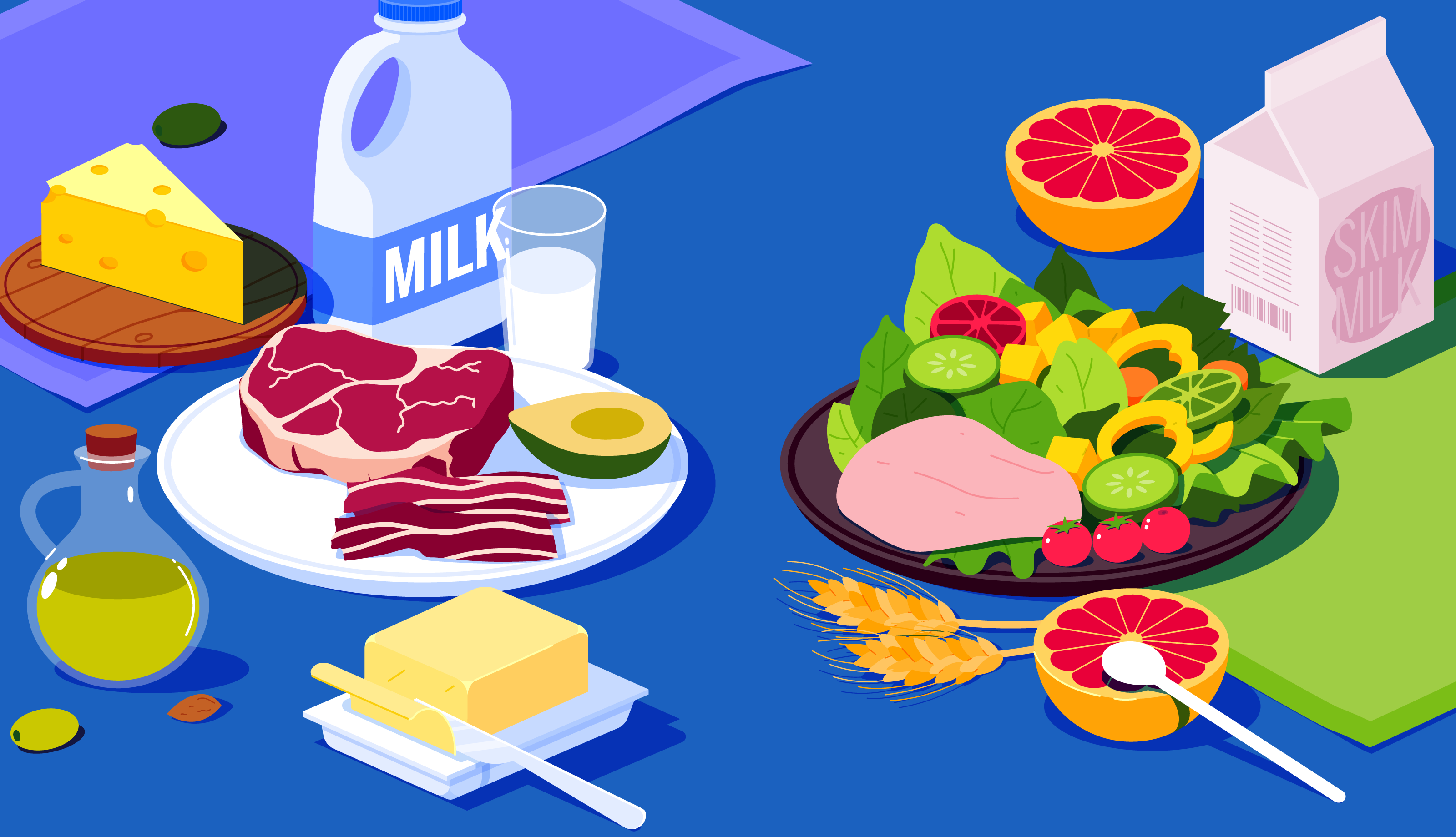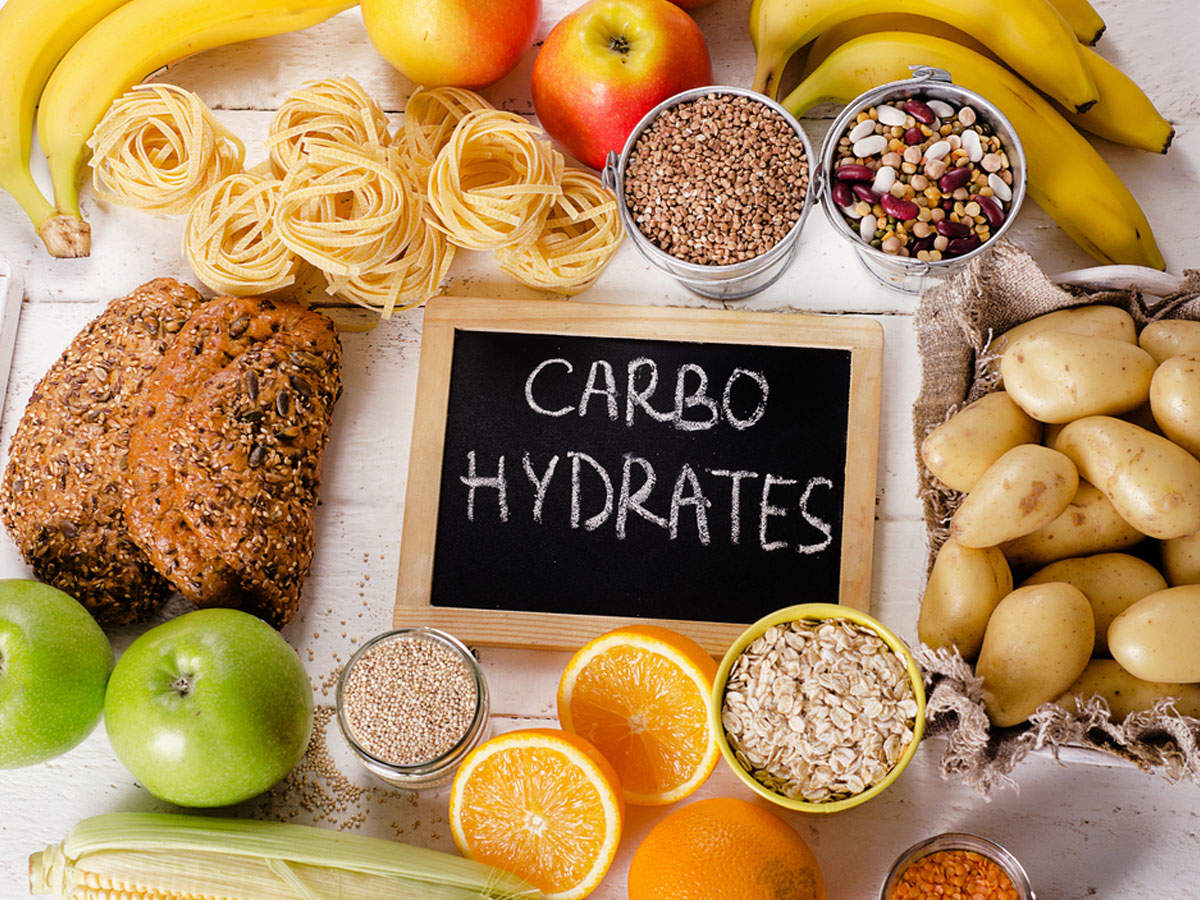Diet Periodization for Bodybuilders
Are You Out of Synch?
Your training and diet should reflect your goals. And your workouts and nutrition choices should work synergistically to help you reach those goals. Seems obvious, but many people fail to do it.
For example, you see people trying to out-train a bad diet when their goal is fat loss. Or, when wanting to build muscle, they train with extremely heavy loads, low volumes, and they avoid carbs. In both cases, they’ll get sub-optimal results and waste a lot of time and energy for a poor return on their investment.
But with just a bit of planning you can avoid this common mistake. Synching your diet and training together isn’t complicated. By assessing your goals and what they require, you can set up a successful diet and know how to adjust it as you progress through different phases of training.
The 3 Phases
When it comes to body composition goals, there are three traditional phases of training:
- Mass Gain (Bulking)
- Fat Loss (Cutting)
- Maintenance (Strength, Transition, or Primer Phases)
These phases should be matched up with the right eating plan to maximize your results. Build a diet plan that works synergistically with each phase of training. Start by asking yourself these questions:
- What’s my main goal?
- What type of training is best for this goal?
- What type of nutrition plan supports this type of training?
Once you answer these questions everything begins to crystallize and a framework of dieting becomes obvious. From here, it’s just a case of fine tuning the details to best suit you. Let’s go over each phase.

1 – Mass Gain Phase
What’s the goal? Increased muscle size. What training best achieves that? High volume weight training mostly in the 6-12 rep range. Now, what nutrition best supports this?
- A surplus of calories
- Adequate protein to maximize muscle protein synthesis
- Sufficient fat intake to optimize hormonal levels
- High carbohydrates to support high volume training
Total Calories
You need to eat a surplus of calories. Eat enough to gain 0.25 to 0.5% of your bodyweight per week. That will equate to roughly 200-500 calories a day over maintenance for most T Nation readers.
A good rule of thumb when starting out is to multiply your bodyweight in pounds by 16 and eat that many calories per day. But that’s just a rough guide. Many will need to eat 17 to 20 times their weight. If you begin at 16 and you’re not gaining weight, bump it up to 17 and then re-assess progress. Keep adjusting until you’re gaining weight at the desired rate.
The body is an infinitely complex system with countless feedback loops. Your needs will continue to fluctuate based on numerous factors. As you progress through your mass phase your calorie needs will adjust. Continue to monitor scale weight and adjust based on that. Not gaining quickly enough? Increase by 250-500 calories a day (lower end for smaller guys and higher end for bigger guys).
Now you can move on to refining your macronutrient needs.
Protein

Muscle protein synthesis (MPS) is arguably the most important physiological factor when it comes to building muscle. Eating protein stimulates MPS. Muscle growth can only occur if MPS exceeds muscle protein breakdown.
So it’s imperative you eat enough protein to max out your MPS across the course of a day. Interestingly, research indicates there’s an amount of protein which achieves this and eating more doesn’t have any additional benefit, at least for muscle gains.
To build muscle, anything in the range of 1.6 to 2.2 grams per kg of lean mass is sufficient. But since not everyone has access to a DEXA machine, let’s keep it simple and shoot for 2g/kg of bodyweight. (In American, that’s close to 1 gram of protein per pound of body weight. One kilogram is 2.2 pounds.)
Split this intake into 4-6 meals each day based on your preference and schedule.
Fat

Eating dietary fat is important for regular hormonal function, especially testosterone production. It should never be eliminated from the diet. It’s not so much an “optimal” fat intake, but a minimum for normal hormonal function. Science tells us that fat intake should be between 20-30% of total calories to optimize testosterone production.
With that said, once the 0.35g/lbs. (0.8g/kg) threshold has been crossed, no significant benefit to hormones is apparent when in a caloric surplus. Above and beyond the amount of fat needed for hormonal function, structural, and chemical processes, it simply becomes a fuel source, like carbs. It’s wise to not exceed the 0.35g/lbs. threshold when bulking.
Carbs

Once protein and fats are set, then carbs make up the rest of your total calories. Carbs, like fats, have a positive impact on hormones. They’re also the dominant source of energy for the central nervous systems (CNS) and high intensity activities, like lifting weights. They help to fuel grueling training and aid recovery.
Approximately 80% of your weight training is fuelled by glycogen stores (stored carbs). Low glycogen will impair your training and recovery. Eating sufficient carbs allows you to train at a higher intensity, with higher volumes, and recover quicker. Carbs have anti-catabolic and anabolic effects and are a huge advantage to hard-training individuals, especially those aiming to build muscle.
Your carbohydrate needs are based on your activity levels. Given you should be training with high volumes during a mass gain phase, your carb needs will be high. A recent scientific review recommended carb intakes between 4-7g/kg for strength athletes. Most recreational, hard training guys will fall at the lower end of this range. For most, 4-5g/kg is ample. (So, a 170 pound guy in mass phase would need roughly 308 to 385 grams of carbs per day.)
How to Track Progress During a Mass Phase
- Aim to gain 0.25 to 0.5% of bodyweight per week. In real world math, the 170 pound guy should be trying to gain roughly 1 or 2 pounds every two weeks, but don’t let the decimal points and percentages make you crazy. Lots of things can throw off scale weight, so just keep this as a general guideline.
- When progress stalls, increase calories by 250 to 500 per day – lower end for lighter and/or fatter individuals and the higher end for bigger and/or leaner folks.
- Adjust based on scale weight with the predominance of additional calories coming from carbs.
- Your strength in the 6-12 rep range should be increasing consistently.

2 – Cutting Phase
What’s the goal? A reduction in body fat. What training best achieves this? As high volume as you can recover from. This will be less than mass phase volume.
Being in a calorie deficit means your ability to recover from training isn’t as good as during a bulk, but you should strive to do as much as possible to provide the strongest signal to the body to retain muscle. High training volumes also help to create a calorie deficit. You might also include some form of cardio to increase the calorie deficit.
Now, what nutrition best supports this goal?
- Calorie deficit
- Protein sufficient to maintain muscle mass (might be slightly higher than in mass and maintenance phases).
- Increased fat intake compared with mass phase. Risk of hormonal disruption is higher in a calorie deficit.
- Carbs should still be high enough to support training with high volumes. Set them as high as possible while still losing fat. Given a deficit is required, carbs will be lower than in mass phase.
Protein
Protein preserves lean tissue when dieting and has the highest effect on satiety (the feeling of being full) of all the macros. Those are two good reasons to consume slightly more protein during a diet. Research suggests anything between 2 and 3.1g/kg as effective during cutting phases. Most people do best with 2.2 to 2.5g/kg. (To do the math for yourself, 1kg = 2.2 pounds.)
Base the exact amount on your eating preferences. The key to a successful diet is your ability to adhere to the plan.
Fat
The risk of hormonal disruption is increased during prolonged low-calorie dieting phases. To mitigate this, increase your fat intake compared to a mass phase. This isn’t an excuse to go full Atkins and start chowing down avocadoes wrapped in bacon and dipped in butter. Just be mindful that you need to be in a caloric deficit while consuming sufficient fat to not feel like a bag of crap the whole time. Eat 1g/kg of fat per day.
Carbs
Whatever calories you have left over will be spent on carbs. Maintain more than 2g/kg for as long as possible to allow productive training.
How to Track Progress During a Cutting Phase
- Aim to lose 0.5 to 1% of bodyweight per week. For a 215 pound guy, that means to aim to lose roughly 1 to 2 pounds per week.
- When progress stalls, lower calories by 250-500 per day (lower end of scale the smaller and/or leaner you are).
- Use the scale, progress pictures, and body composition measures like skinfold readings to guide your adjustments.

3 – Maintenance, Transition, or Primer Phase
Firstly, let’s address the issue of training for maintenance. Why would you do that?
Hypertrophy training requires you to train hard, and with high volumes, while progressively overloading your body. More is better, but you can’t indefinitely train harder and for longer. Eventually, the Law of Diminishing Returns will kick in: the more you do something the less you get from it in subsequent exposures. To overcome this, you need to periodize your training. You need to train with lower volumes.
For example, periods of time spent training for strength or at maintenance training should be included to allow for full recovery and to set the scene for the next block of hard muscle-building training. By reducing your training volume to maintenance levels for a month or so you can re-sensitize your body to volume again. Then ramp volume back up in your next mass gain phase.
These maintenance phases allow your body to settle, refuel, and prime yourself to continue your muscle-building journey. After a long mass gain phase, you accumulate a lot of fatigue, your body becomes less insulin sensitive, it adapts to the high volumes, and requires you to do even more to overload the system.
This all sets you up for a higher chance of fat gain, overtraining, or injury.
Properly timed deloads can help mitigate these risks for a period but they can’t compensate for months of hard training. A maintenance phase is just what the doctor ordered.
Another reason for maintenance phases is to help retain muscle built during a bulk. Give your body a chance to become adapted to its new, more muscular set-point.
Use the maintenance phase at the end of your mass phase when calories and training volume are at their peak. During this phase, you’ll attempt to maintain your bodyweight. This enables the body to find its “new normal.” As a result, it will hold onto the muscle you built during the mass phase.
But I bet the whole “maintenance” thing is still bugging you, right? Who wants to train at maintenance? It’s all about full beast mode, 24/7/36, bro!
That’s why I like to call maintenance phases “primer phases.” This phase is literally priming you for future gains. Or think of it as a “transition” phase between bulking and cutting, or a “strength” phase.
While this is all semantics, the vocabulary used makes a big psychological difference and improves adherence. So, pick whichever language suits you and then get your head down and do what’s required: low-volume strength training while eating at maintenance.
Maintenance Phase Training and Nutrition
Train for strength – lower frequency, lower volume, lower reps, but heavier weights than what you used in your mass or cutting phase. For example, 3 sets of 5 reps (3×5). This works because it’s much easier to maintain muscle than it is to build it, so the stimulus from training can be much lower.
As for nutrition, an isocaloric diet is best – maintain your bodyweight and eat at maintenance.
While eating at maintenance and training heavy there’s little risk of muscle loss. Protein can stay the same as during your mass phase. Carbs can be reduced as training volume is lower. Fats can be increased somewhat to offset the reduction in carbs and ensure hormone levels are maintained.
This phase allows you to recover some insulin sensitivity after your high-carb mass phase. It also allows psychological relief. After following a high carb, relatively low-fat mass gaining phase you’ll likely be sick of foods like rice, oats, and potatoes paired with lean proteins. As a result, the opportunity to have some fatty foods with some carbs during maintenance helps to wash away any fatigue and set you up for the next phase of dieting.
Maintenance Phase Nutritional Guidelines
- Protein: 0.9g/lb. (2g/kg)
- Carbs: 2.5 to 3g/kg, about half that of peak mass phase
- Fat: The rest (around 1.25 to 1.5g/kg)
How to Track Progress During a Maintenance Phase
- Just maintain weight!
- If weight fluctuates by more than plus or minus a pound (0.45kg), adjust calories up or down by 250 to 500 per day (lower end of range for smaller individuals and higher range for bigger guys).
Putting It All Together
To give you an overview of how you might sequence these phases, here’s a good structure, assuming you’re relatively lean or approximately 10% body fat:
- Mass Gain: 10-16 weeks until you reach 15%
- Maintenance Phase: 4 weeks
- Cut: 3-8 weeks until you reach 8-10%
- Repeat until huge and ripped


